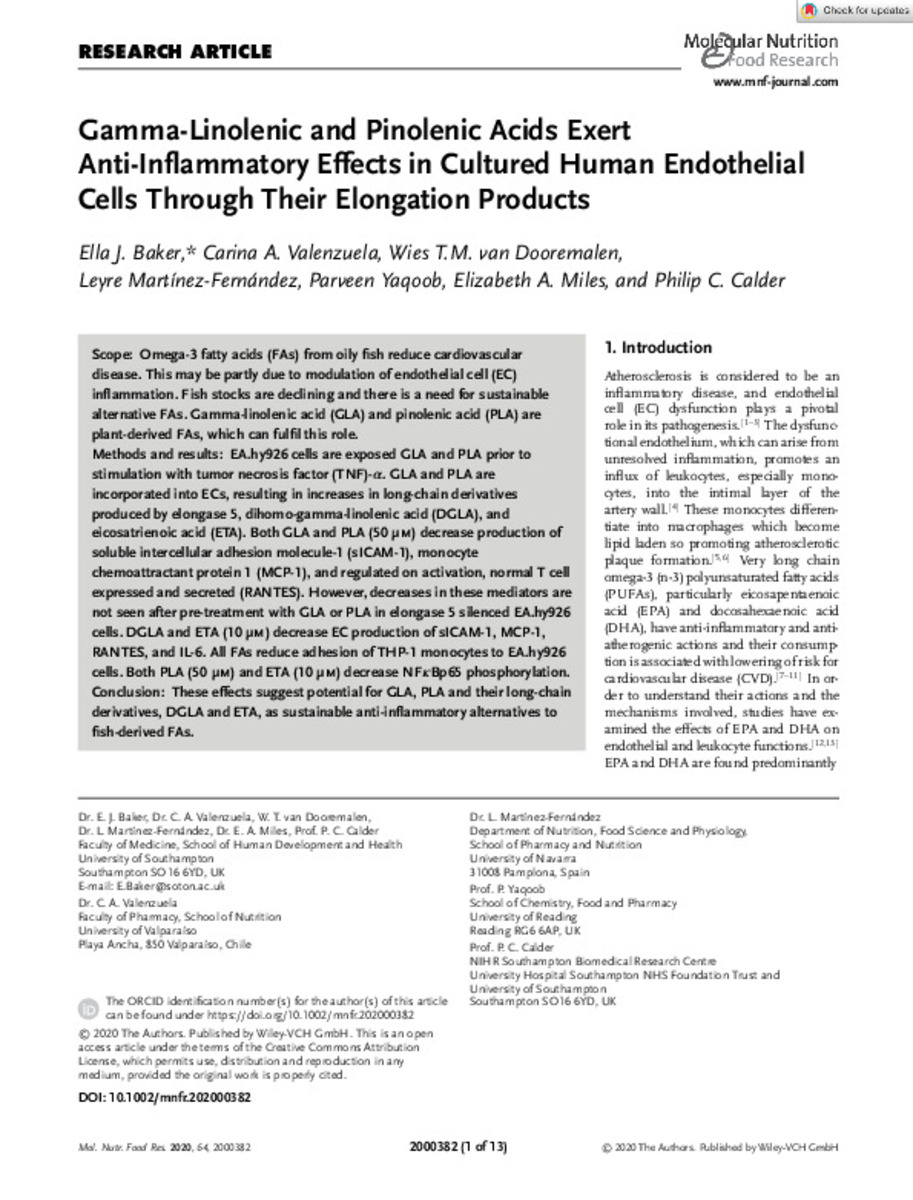Gamma-Linolenic and Pinolenic Acids Exert Anti-Inflammatory Effects in Cultured Human Endothelial Cells Through Their Elongation Products
Keywords:
Endothelial cells, g, i, p, p
Gamma-linolenic acid
Inflammation
Pinolenic acid
Polyunsaturated fatty acids
Note:
This is an open
access article under the terms of the Creative Commons Attribution
License, which permits use, distribution and reproduction in any
medium, provided the original work is properly cited.
Citation:
Baker, E.J. (Ella J.); Valenzuela, C.A. (Carina A.); van-Dooremalen, W.T.M. (Wies T.M.); et al. "Gamma-Linolenic and Pinolenic Acids Exert Anti-Inflammatory Effects in Cultured Human Endothelial Cells Through Their Elongation Products". Molecular Nutrition and Food Research. 64 (20), 2020, 2000382
Statistics and impact
0 citas en

0 citas en

Items in Dadun are protected by copyright, with all rights reserved, unless otherwise indicated.







